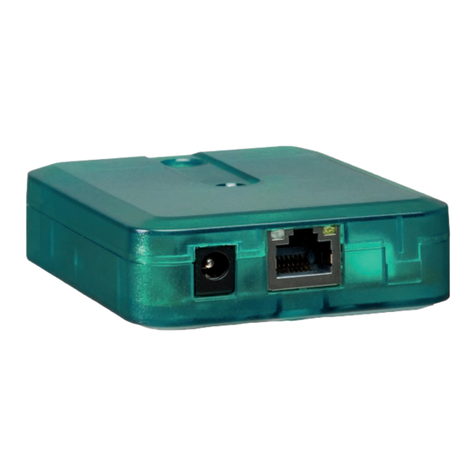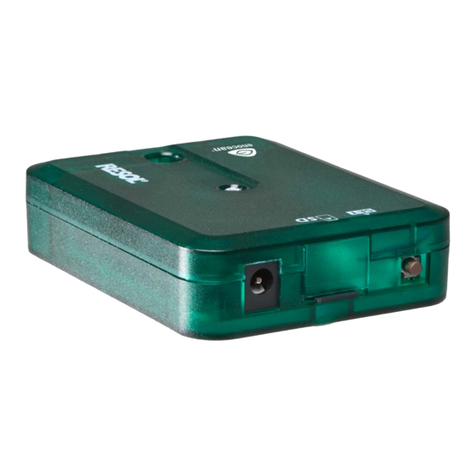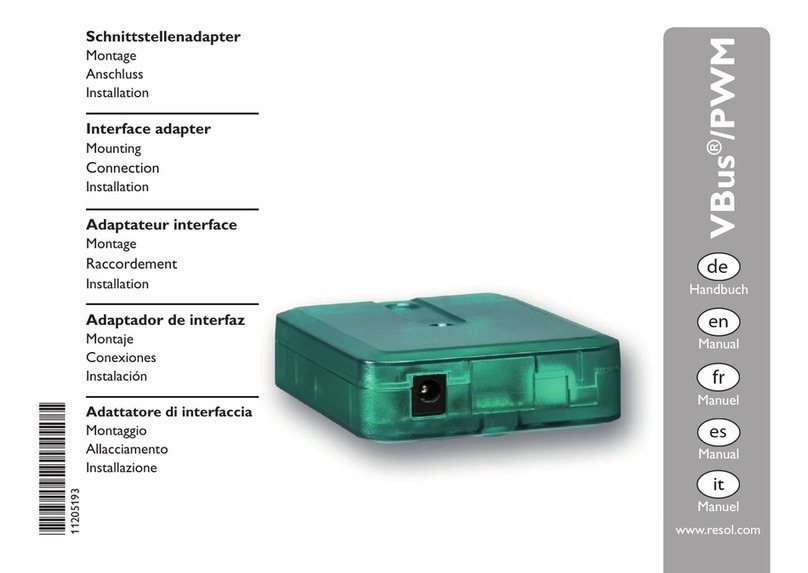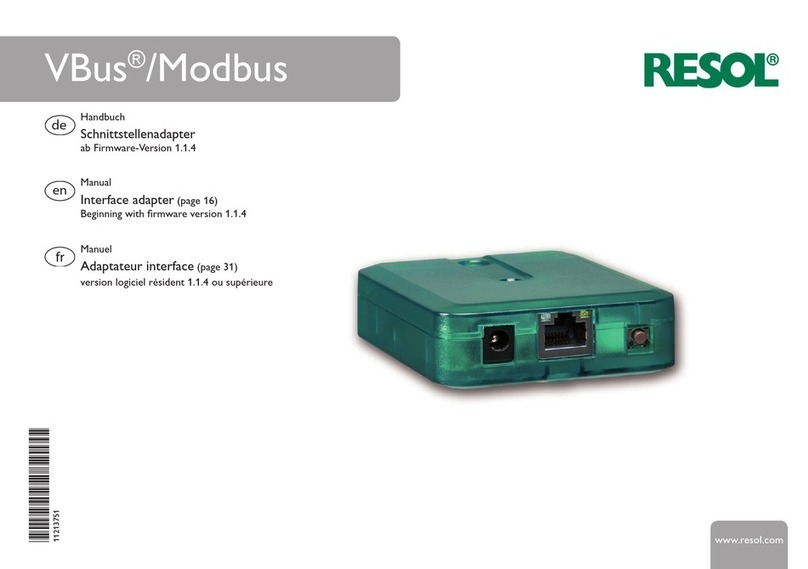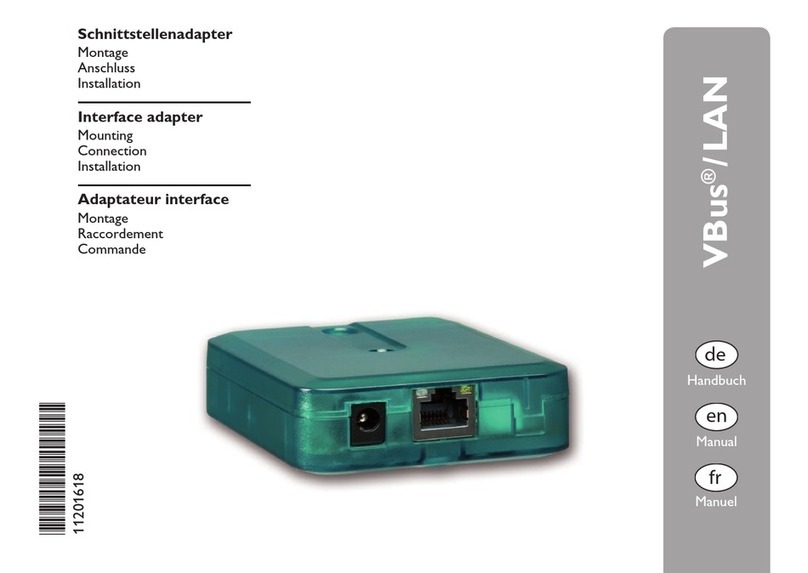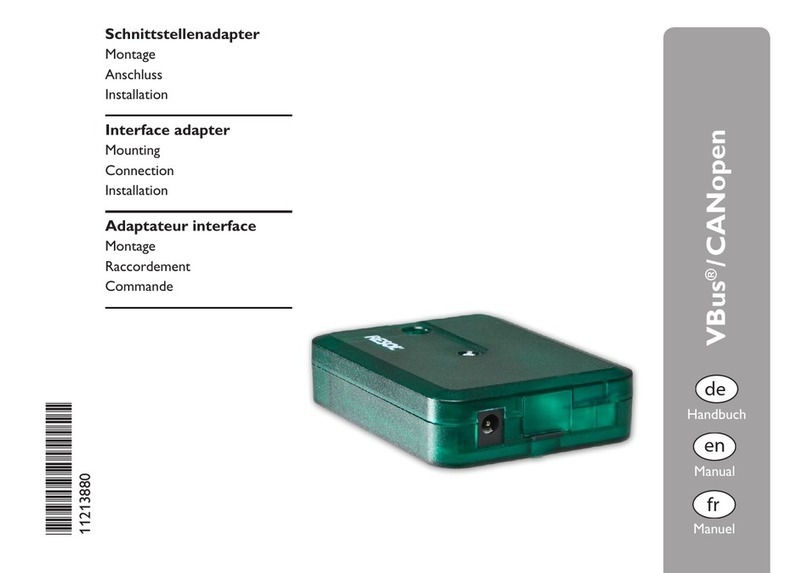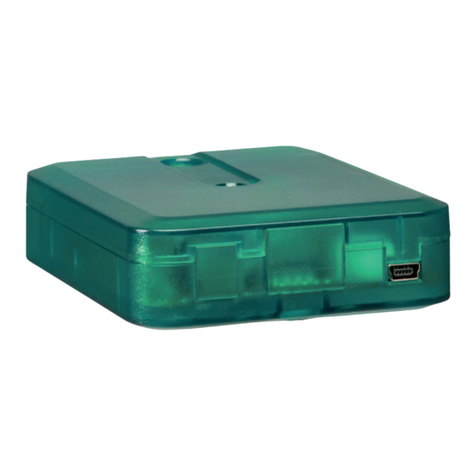
Schnittstellenadapter VBus®/PWM
© RESOL_10040_VBus/PWM_mon5s.indd
| 2
Irrtum und technische Änderungen vorbehalten
Inhaltsverzeichnis
Sicherheitshinweise ................................................. 2
Übersicht .................................................................. 3
Technische Daten .................................................... 3
1. Montage ............................................................... 4
2. Anschluss ............................................................. 4
3. Einstellung der Ausgangsart ............................. 5
4. Invertierung der PWM-Signalausgabe ............ 5
5. DIP-Schalter zur Relaisadressierung ............... 6
6. Inbetriebnahme .................................................. 7
5.1 Initialisierungsphase ................................................7
5.2 Anzeige des ausgewählten Relais ........................7
5.3 Fehlermeldung .........................................................7
Impressum ................................................................ 8
Sicherheitshinweise
Bitte beachten Sie diese Sicherheitshinweise genau, um
Gefahren und Schäden für Menschen und Sachwerte aus-
zuschließen.
Vorschriften
Beachten Sie bei allen Arbeiten die nationalen und regio-
nalen gesetzlichen Vorschriften, Normen, Richt linien und
Sicherheitsbestimmungen.
Symbolerklärung
Signalwörter kennzeichnen die Schwere der Gefahr, die
auftritt, wenn sie nicht vermieden wird.
Warnung bedeutet, dass schwere Personenschäden oder
sogar Lebengefahr auftreten können
Achtung bedeutet, dass Sachschäden auftreten können
Angaben zum Gerät
Bestimmungsgemäße Verwendung
Der Schnittstellenadapter VBus®/PWM darf nur für die
drehzahlgeregelte Ansteuerung einer Pumpe in Verbindung
mit einem elektronischen Regler für solarthermische Anla-
gen über den RESOL VBus® unter Berücksichtigung der in
dieser Anleitung angegebenen technischen Daten verwendet
werden.
Die bestimmungswidrige Verwendung führt zum Ausschluss
jeglicher Haftungsansprüche
CE-Konformitätserklärung
Das Produkt entspricht den relevanten Richt-
linien und ist daher mit der CE-Kennzeichnung
versehen. Die Konformitätserklärung kann bei
RESOL angefordert werden.
Hinweis
Hinweise sind mit einem Informations symbol
gekennzeichnet.
Entsorgung
•Das Verpackungsmaterial des Gerätes umweltgerecht
entsorgen.
•Altgeräte müssen durch eine autorisierte Stelle um-
weltgerecht entsorgt werden. Auf Wunsch nehmen wir
Ihre bei uns gekauften Altgeräte zurück und garantieren
für eine umweltgerechte Entsorgung.
ÎTextabschnitte, die mit einem Pfeil gekennzeichnet sind,
fordern zu einer Handlung auf.
WARNUNG! Warnhinweise sind mit einem
Warndreieck gekennzeichnet!
ÎEs wird angegeben, wie
die Gefahr vermieden
werden kann!
Hinweis
Starke elektromagnetische Felder können die
Funktion des Geräts beeinträchtigen.
ÎSicherstellen, dass das Gerät keinen starken
elektromagnetischen Strahlungsquellen aus-
gesetzt ist.
